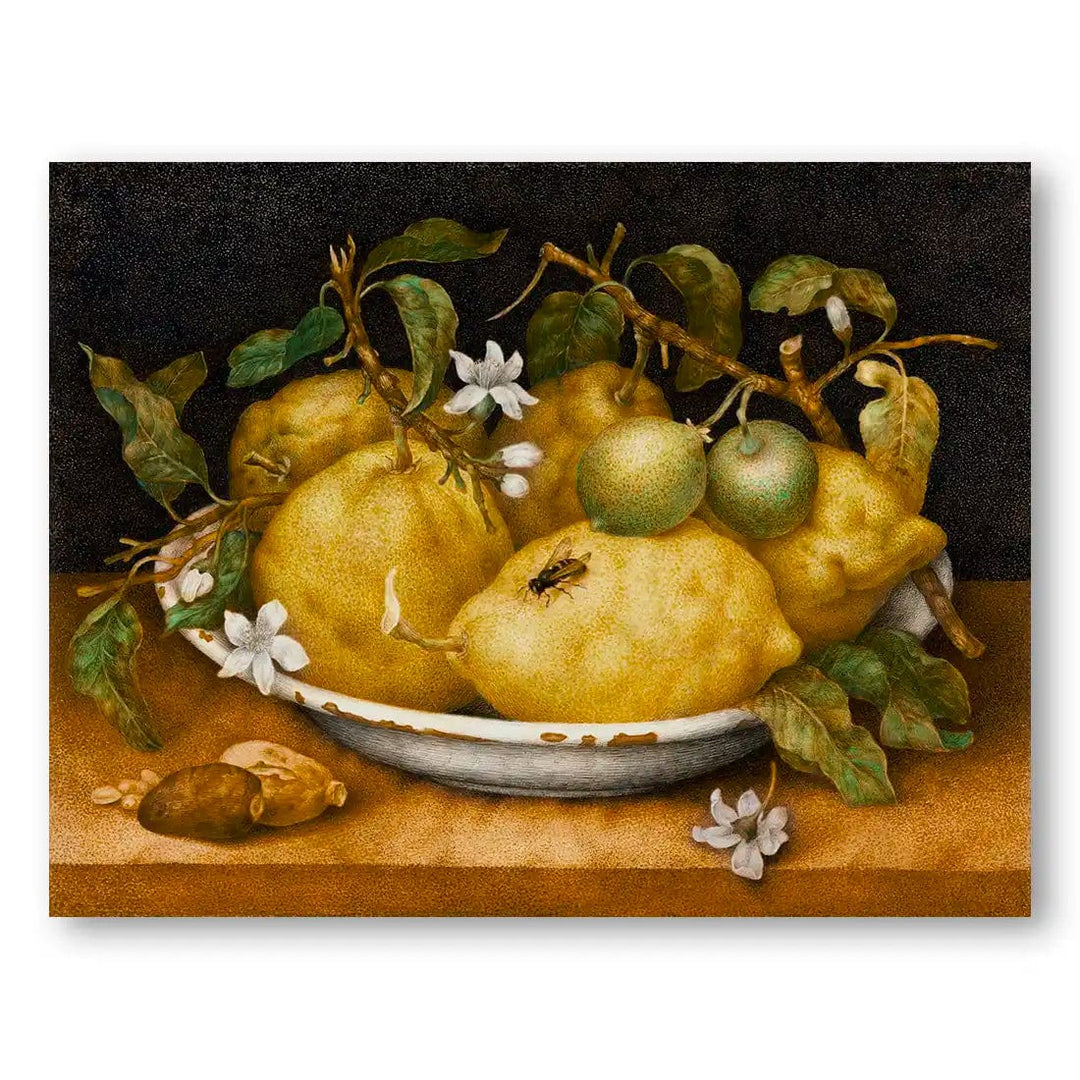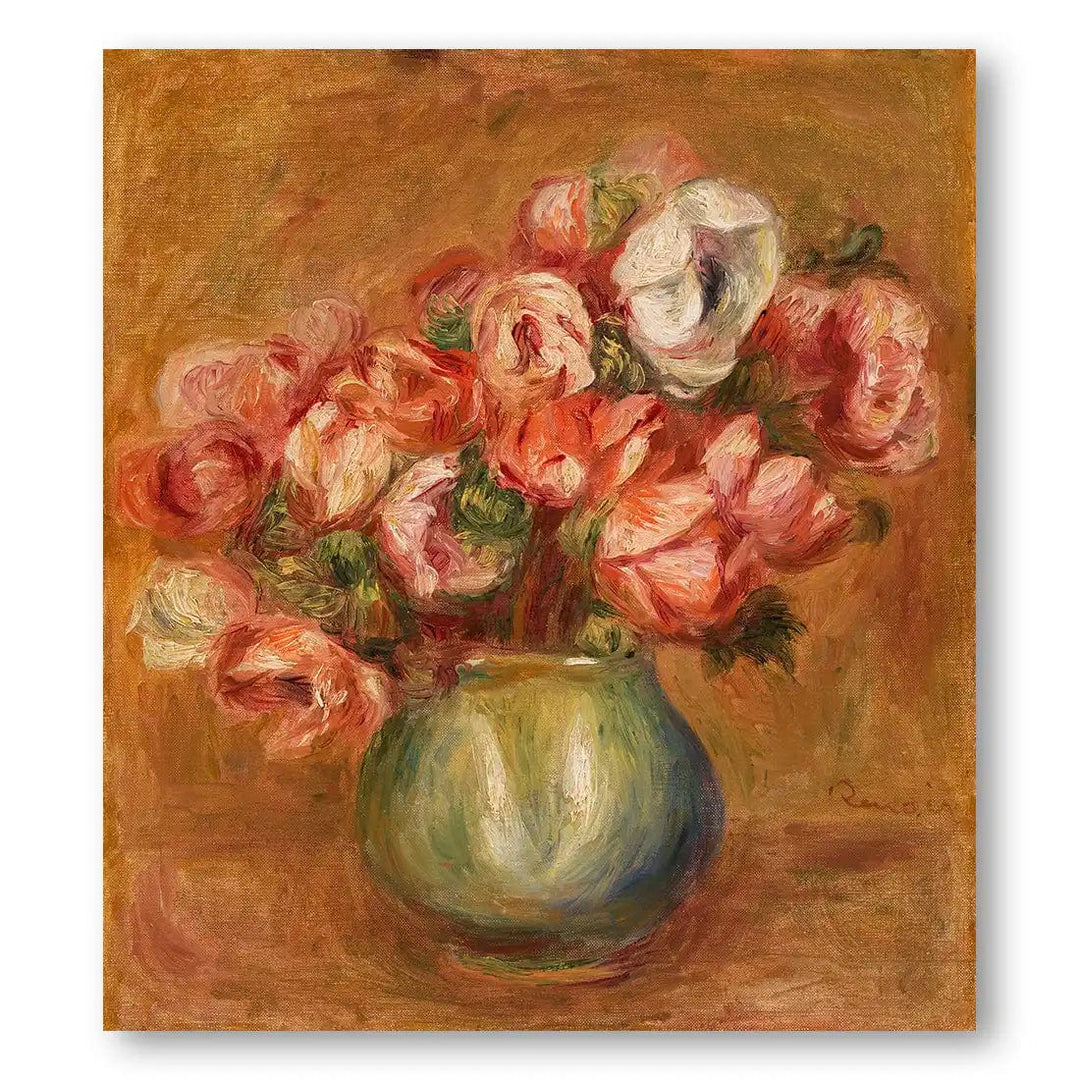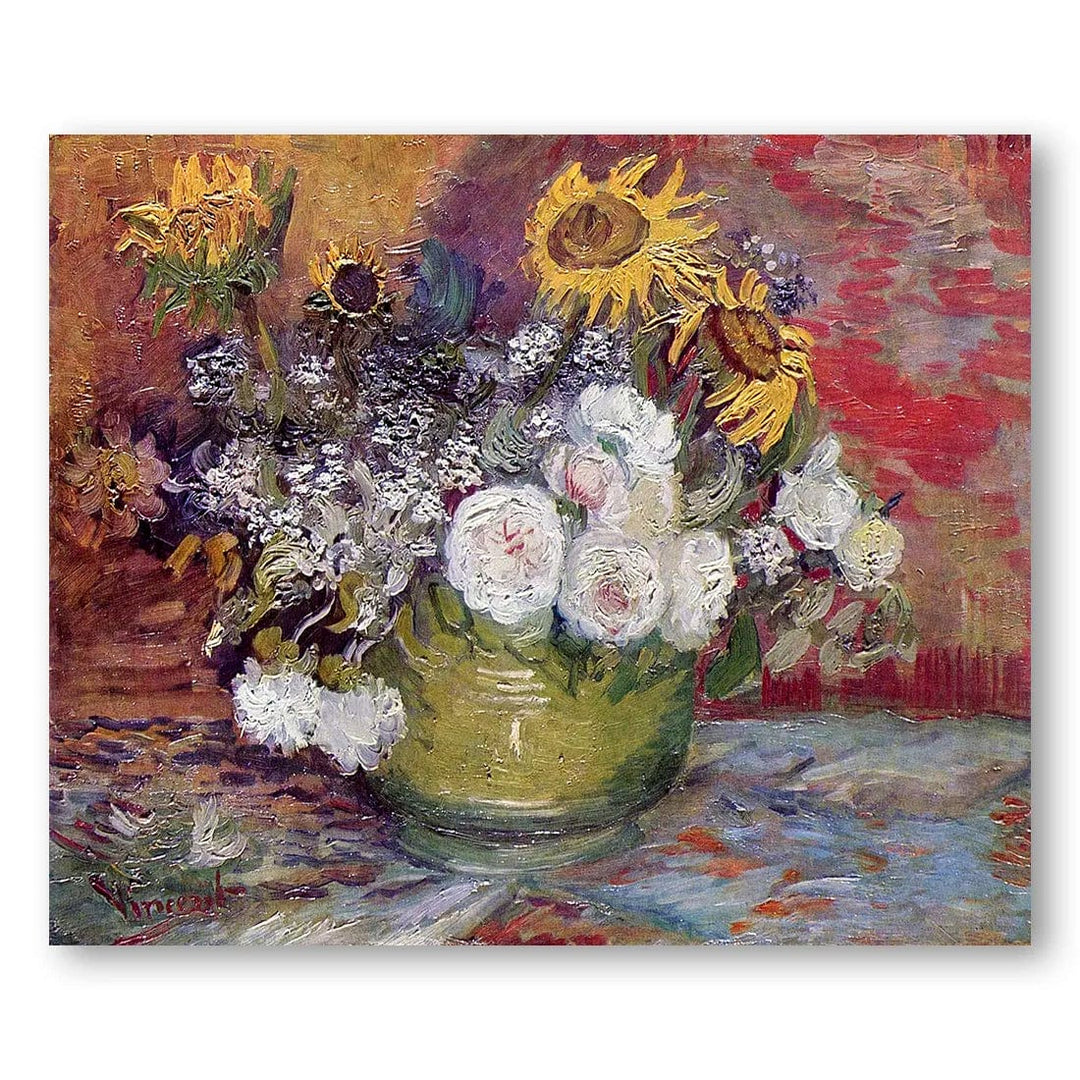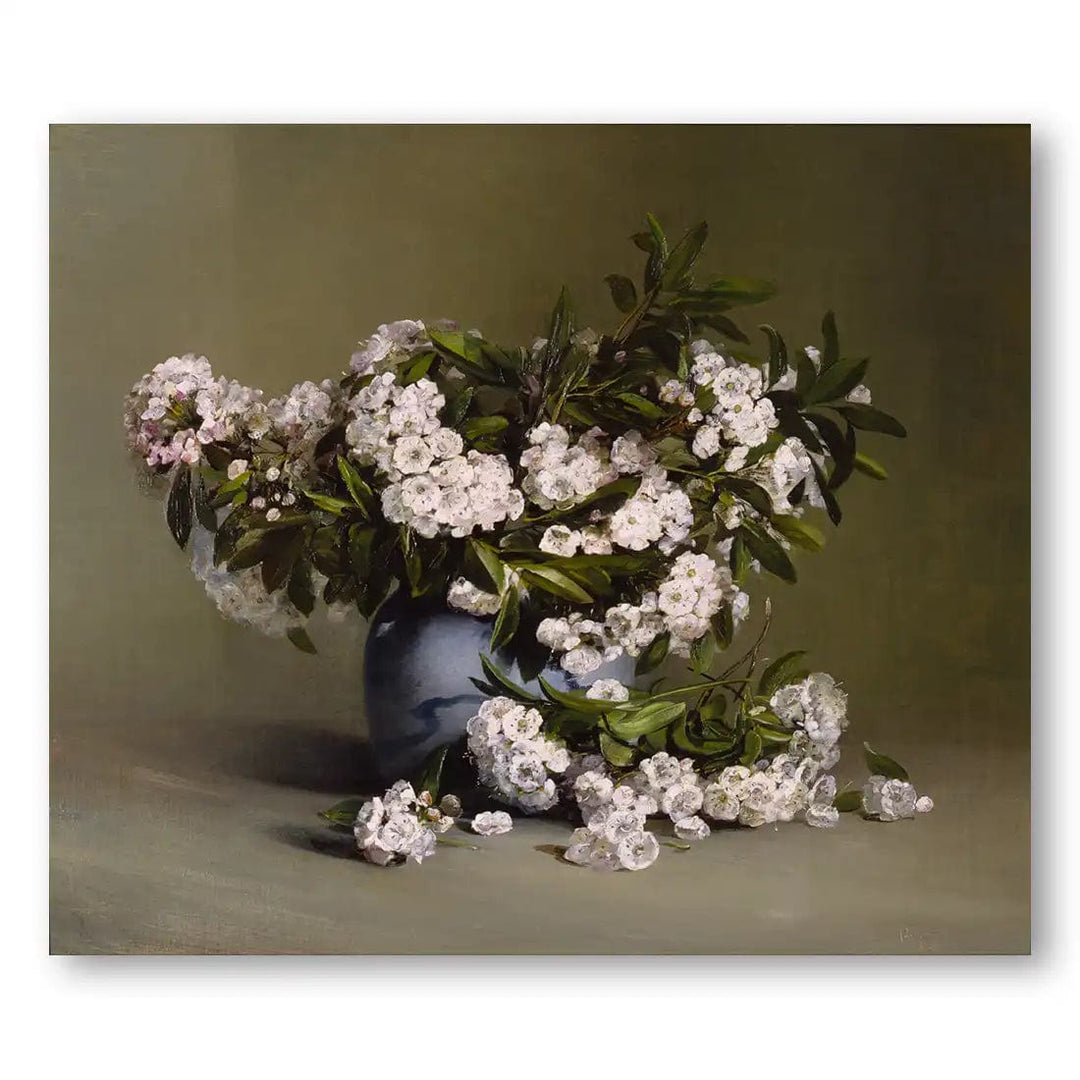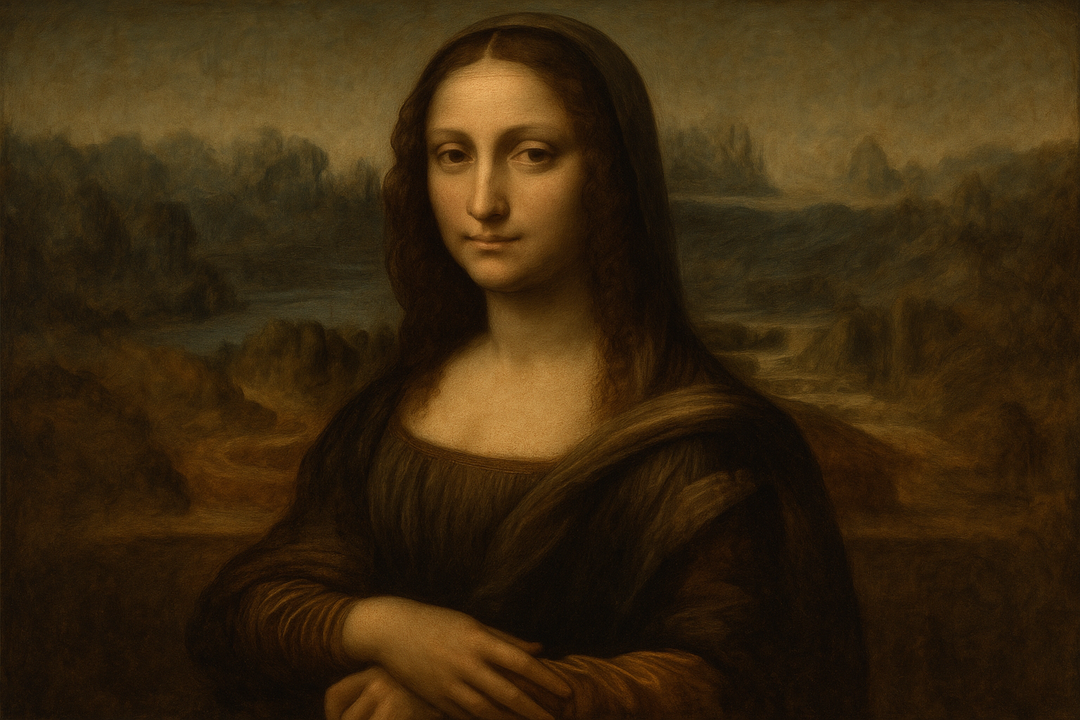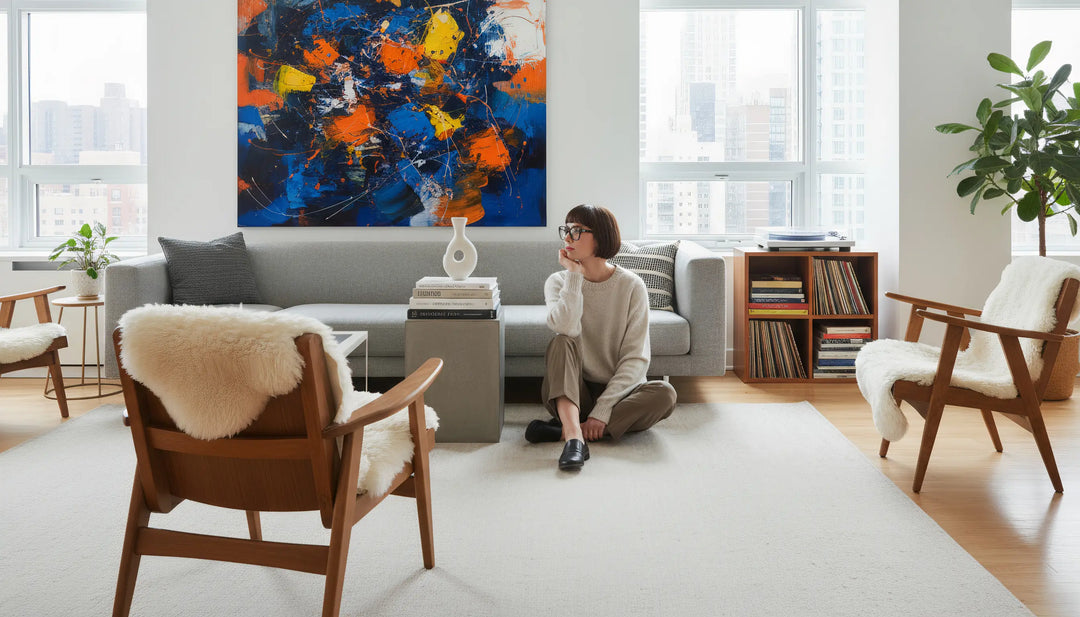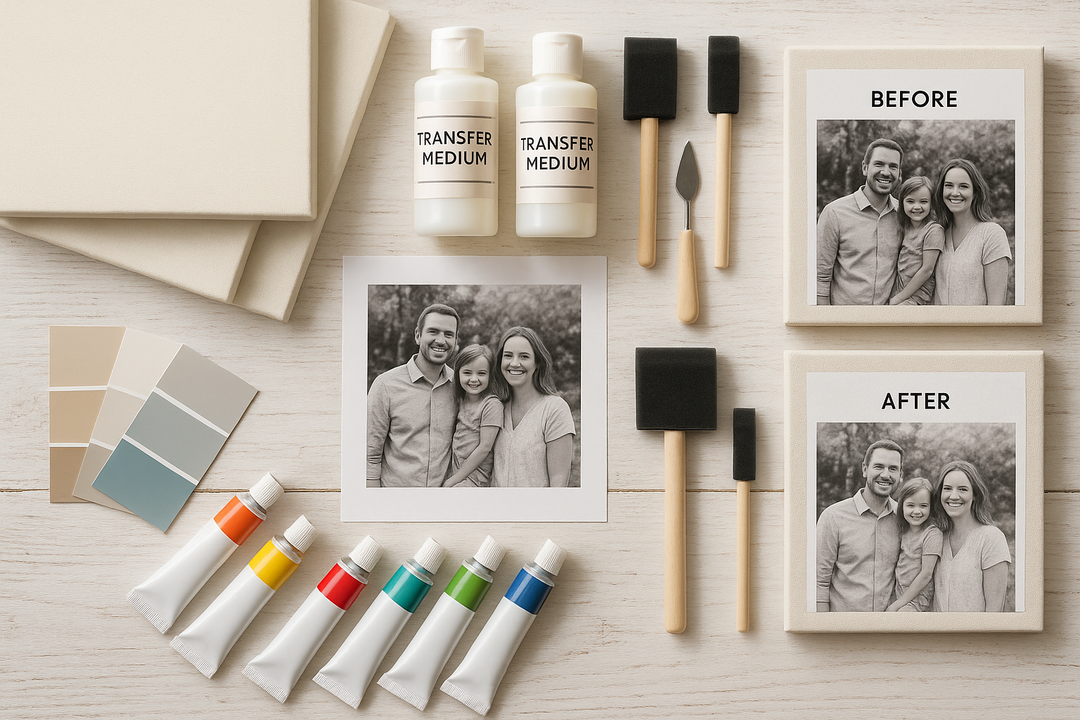
Written by Nikki Sandeman
Founder, Stone & Gray
Specializing in integrating classical art traditions with contemporary South African interior design. Full credentials →
Key Takeaways
- Still life art originated in the 17th century Dutch Golden Age, elevating everyday objects into profound artistic statements
- Famous masters like Cézanne, Van Gogh, and Chardin revolutionized the genre with innovative techniques
- Modern still life prints offer affordable ways to bring museum-quality art into contemporary homes
- Proper placement, lighting, and colour coordination can transform any room's atmosphere
The Magic of Still Life Art: Bringing Nature's Beauty to Your Home
Have you ever looked at a painting of a bowl of fruit or a vase of flowers and felt like you could almost smell them? That's the magic of still life art! These paintings capture everyday objects in a way that makes them look special and beautiful. Let's explore some amazing still life artworks that can make your home feel warm and cozy.
🎨 Discover Your Perfect Still Life Style!
Take our 2-minute quiz to find the ideal still life art for your home and personality
📖 Article Navigation
The Evolution of Still Life Art: From Dutch Masters to Contemporary Artists

Timeline: The evolution of still life art through the centuries
Still life art emerged during the 17th century Dutch Golden Age, where artists like Johannes Vermeer and Dutch Golden Age masters elevated everyday objects into profound artistic statements. This period marked a revolutionary shift in art, as painters began to find beauty in the mundane - transforming simple fruits, flowers, and household items into masterpieces that spoke to deeper themes of life, mortality, and abundance.
💡 Key Historical Periods:
- Dutch Golden Age (1600s): Established still life as a legitimate art form with symbolic meaning
- French Academic Period (1700s): Chardin's domestic tranquility and sophisticated light studies
- Post-Impressionist Revolution (1880s-1900s): Cézanne's geometric innovation and Van Gogh's emotional intensity
- Modern Minimalism (1900s-1960s): Giorgio Morandi's meditative compositions
- Contemporary Reinterpretation (1960s-present): Wayne Thiebaud's pop art influence and modern techniques
Masters Who Shaped the Genre: From Classical to Contemporary
The still life tradition was revolutionised by legendary artists whose techniques continue to influence contemporary art. Recent auction results show that works by these masters continue to command significant prices, with Cézanne pieces reaching $59 million at Christie's in 2024.
🎨 Paul Cézanne (1839-1906)
Innovation: Geometric spatial organisation and color theory
Famous Work: "The Card Players" series
Market Value: Up to $137.7 million for major works
Technique: Used still life to demonstrate elements of colour, line, and form, laying groundwork for modern abstraction.
🌻 Vincent van Gogh (1853-1890)
Innovation: Emotional intensity through colour and brushwork
Famous Work: "Sunflowers" series
Market Impact: One of the most recognisable artists globally
Technique: Brought emotional intensity to everyday objects with vibrant colours and expressive brushstrokes.
🕯️ Jean-Baptiste-Siméon Chardin (1699-1779)
Innovation: Sophisticated light and texture studies
Famous Work: Domestic kitchen scenes
Legacy: Influenced French academic tradition
Technique: Subtle approach to light and texture created intimate scenes celebrating everyday beauty.
🏺 Giorgio Morandi (1890-1964)
Innovation: Minimalist meditation on form and space
Famous Work: Bottle and vessel compositions
Influence: Inspired modern minimalism
Technique: Subtly muted compositions reflecting rejection of modern life's tumult.
🧁 Wayne Thiebaud (1920-2021)
Innovation: Pop art meets classical still life
Famous Work: Cake and pastry paintings
Legacy: Bridge between classical and contemporary
Technique: Combined traditional still life with pop art sensibilities and modern commercial subjects.
🎲 Contemporary Artists (2020s)
Innovation: Social commentary through objects
Example: Lottery tickets and modern consumption
Trend: Luxury items meet everyday reality
Technique: Artists like those featured in Artsy's 2024 analysis use traditional techniques to comment on modern life.
Understanding Still Life Composition: The Rule of Thirds in Art
Professional still life composition follows principles that create visual harmony and guide the viewer's eye. Understanding these techniques helps you appreciate the artistry and choose pieces that work best in your space.

Symbolic meanings of common still life objects
🎯 Key Composition Principles:
- Rule of Thirds: Important objects placed at intersection points create dynamic balance
- Triangular Arrangement: Creates stability and draws the eye through the composition
- Foreground/Background Depth: Layering objects creates three-dimensional space
- Light Source Consistency: Single light source creates realistic shadows and form
- Color Balance: Warm and cool colors distributed to avoid visual weight imbalance
- Negative Space: Empty areas give the eye places to rest and emphasize main subjects
Painting Techniques: From Glazing to Impasto in Still Life
🖌️ Glazing Technique
Method: Transparent layers of paint
Effect: Luminous, jewel-like colors
Masters: Jan van Eyck, Vermeer
Best for: Glass, fruits, reflective surfaces
🎨 Impasto Technique
Method: Thick, textured paint application
Effect: Dynamic, expressive surfaces
Masters: Van Gogh, Cézanne
Best for: Flowers, rough textures, emotional impact
✨ Chiaroscuro
Method: Dramatic light and shadow contrast
Effect: Three-dimensional form and drama
Masters: Caravaggio, Chardin
Best for: Creating mood and depth
🌈 Broken Color
Method: Small touches of pure color
Effect: Vibrant, shimmering surfaces
Masters: Renoir, Impressionists
Best for: Capturing light and atmosphere
What is Still Life Art?
Still life art is like taking a photo of things that don't move - fruits, flowers, or everyday objects. Artists arrange these items in interesting ways and then paint them. It's a bit like creating a colourful puzzle with real objects! Today's still life prints continue this tradition, offering affordable ways to bring museum-quality art into modern homes.
Color Theory in Still Life: How Artists Create Mood and Meaning
Understanding color theory is essential for appreciating still life art and selecting pieces that enhance your space. Master artists use specific color combinations to evoke emotions, create harmony, and guide the viewer's attention through sophisticated psychological principles.

Color psychology wheel: How different hues create specific moods in still life art
The Science Behind Color Psychology in Art
Research in environmental psychology shows that colors can significantly impact mood, productivity, and even appetite. Still life artists have intuitively understood these principles for centuries, using them to create specific atmospheric effects in their compositions.
🌅 Warm Colors (Reds, Oranges, Yellows)
Psychological Effect: Energy, warmth, appetite stimulation
Best For: Kitchens, dining areas, social spaces
Famous Example: Van Gogh's "Sunflowers" - creates instant warmth and energy
South African Appeal: Reflects our abundant sunshine and vibrant culture
🌊 Cool Colors (Blues, Greens, Purples)
Psychological Effect: Calm, focus, mental clarity
Best For: Offices, bathrooms, bedrooms
Famous Example: Cézanne's blue period still lifes - promote concentration
Professional Tip: Ideal for high-stress environments
⚫ Neutral Palettes (Grays, Beiges, Whites)
Psychological Effect: Sophistication, timelessness, flexibility
Best For: Modern homes, minimalist spaces
Famous Example: Morandi's muted bottle studies - meditative quality
Design Advantage: Works with any décor style
🌸 Soft Pastels (Pinks, Lavenders, Creams)
Psychological Effect: Romance, serenity, gentleness
Best For: Bedrooms, nurseries, reading nooks
Famous Example: Renoir's delicate flower studies - create peaceful atmospheres
Cultural Note: Popular in South African coastal homes
Advanced Color Harmony Techniques
🎨 Professional Color Schemes in Still Life:
- Monochromatic: Single color in various shades - creates sophisticated unity (Morandi's bottles)
- Complementary: Opposite colors on wheel - creates vibrant contrast (red apples on green cloth)
- Analogous: Adjacent colors - creates harmony (yellow lemons, orange oranges, red apples)
- Triadic: Three evenly spaced colors - creates balanced vibrancy (purple grapes, orange persimmons, green pears)
- Split-Complementary: One color plus two adjacent to its complement - sophisticated without being jarring
Cultural Color Significance in South African Context
When selecting still life art for South African homes, consider our unique cultural relationship with color. Our bright, intense sunlight affects how we perceive colors, making them appear more vibrant. Additionally, our diverse heritage brings rich color traditions from African, European, and Asian influences.
Stunning Still Life Collections to Transform Your Space

Transform your space: Before and after with carefully selected still life art
Sunny Citrus: The Bowl of Lemons
Look at this cheerful "Bowl of Lemons" painting! The bright yellow lemons seem to glow, making you think of sunny days and fresh lemonade. This type of citrus still life is perfect for South African homes, reflecting our abundant sunshine and vibrant culture. Hanging this in your kitchen could make even a rainy day feel brighter!
- Bright and cheerful colours that energise any space
- Makes you think of summer and fresh abundance
- Perfect for adding a pop of colour to kitchens and dining areas
- Stimulates appetite and creates welcoming atmosphere
Delicate Blooms: Renoir's Anemones
Renoir was a famous Impressionist artist who mastered the art of capturing light and atmosphere. His "Anemones" painting looks so soft and pretty, it's like the flowers might sway if you blew on them! This artwork demonstrates the Impressionist technique of loose brushstrokes and subtle colour transitions. This piece could make a bedroom or living room feel calm and peaceful.
- Soft, dreamy colours that create serenity
- Painted by a world-renowned Impressionist master
- Creates a calm, relaxing atmosphere perfect for personal spaces
- Demonstrates sophisticated artistic techniques
A Burst of Sunshine: Sunflowers and Roses
Wow! This "Bowl of Sunflowers & Roses" is like a firework of colours! The combination draws inspiration from Van Gogh's famous sunflower series, showing how contemporary artists continue classical traditions. The big, happy sunflowers and pretty roses make such a fun combination. This painting could brighten up any room and make people smile when they see it.
- Vibrant, eye-catching colours that command attention
- Mix of different flowers for visual variety and interest
- Great for adding energy and warmth to larger spaces
- Inspired by famous Post-Impressionist techniques
Nature's Elegance: Mountain Laurel
The "Mountain Laurel" painting shows delicate pink and white flowers that look almost like little stars. This artwork brings a touch of nature's beauty indoors, reflecting the botanical illustration tradition that peaked during the 18th and 19th centuries. It would look lovely in a quiet reading nook or a cozy dining room, creating a connection with South Africa's beautiful indigenous flora.
- Delicate, natural beauty that soothes the senses
- Soft, soothing colours perfect for relaxation areas
- Brings a piece of nature into your home
- Connects with botanical art traditions
How to Choose Frame Sizes for Different Room Types
Room-by-Room Sizing Guide:
- Living Room (above sofa): 150-180cm wide for optimal visual impact
- Dining Room: 90-120cm pieces work well above buffets or servers
- Bedroom (above headboard): 60-90cm for intimate, personal spaces
- Kitchen/Breakfast Nook: 30-45cm pieces for cozy, accessible viewing
- Hallways: Gallery walls with multiple 20x25cm to 40x50cm pieces
- Home Office: 40x50cm medium pieces that inspire without distracting
- Bathrooms: Small 20x30cm pieces that withstand humidity
The Art of Color Coordination with Interior Design
Successfully integrating still life art into your home requires understanding how colours interact with your existing décor. Here's professional guidance for creating harmonious spaces:
Complementary Color Schemes
Choose still life prints that either complement or provide strategic contrast to your room's colour palette. For neutral rooms with beige, cream, or grey walls, vibrant fruit and flower still lifes add energy and focal points. For richly coloured rooms, opt for more muted still life pieces that enhance rather than compete.
Seasonal Art Rotation
Consider rotating your still life collection seasonally - bright citrus and sunflower prints for summer months, and more muted floral or fruit arrangements for winter. This approach keeps your home feeling fresh and connects your interior with natural seasonal rhythms.
Caring for Art Prints: Expert Preservation Tips
Protecting your still life art investment requires understanding proper care and display techniques. Here's professional guidance for South African conditions:
Lighting Best Practices
- Avoid Direct Sunlight: South Africa's intense UV radiation can fade prints quickly. Use UV-filtering glass for extra protection.
- Optimal Lighting: Use warm LED lights (2700K temperature) positioned at 30-degree angles to minimize glare.
- Controlled Illumination: Aim for 150-300 lux lighting levels - bright enough to appreciate detail without causing damage.
Humidity and Temperature Control
South Africa's varied climate requires special attention to environmental conditions. Maintain relative humidity between 45-55% and stable temperatures around 18-22°C. During humid coastal summers or dry highveld winters, consider using humidifiers or dehumidifiers to protect your collection.
Why People Love Still Life Art
Still life paintings are special because they:
- Make ordinary things look extraordinary - transforming everyday objects into artistic treasures
- Bring nature's beauty inside your home - connecting us with natural elements year-round
- Can change the mood of a room - influencing emotions through colour and composition
- Tell stories without using words - conveying themes of abundance, beauty, and the passage of time
- Offer timeless appeal - remaining relevant across centuries and decorating trends
Investment Value: Why Quality Art Prints Appreciate Over Time
High-quality still life prints, especially those featuring famous artists or limited editions, can appreciate in value over time. Factors that contribute to appreciation include:
- Artist Recognition: Works by established masters like Renoir, Cézanne, or Van Gogh maintain strong market demand
- Print Quality: Museum-quality giclée prints on archival paper retain value better than standard reproductions
- Condition: Properly cared for prints in excellent condition command premium prices
- Provenance: Documented exhibition history or gallery associations enhance value
Choosing the Perfect Still Life for Your South African Home
When picking a still life painting for your home, consider these factors specific to South African living:
- Climate Considerations: Choose prints with UV protection for our intense sunlight
- Cultural Connection: Look for pieces featuring indigenous flowers or fruits that reflect our natural heritage
- Room Function: Bright, energetic pieces for social areas; calming, muted works for private spaces
- Color Harmony: Ensure the artwork complements your existing décor palette
- Personal Response: Choose pieces that genuinely move you - art should bring joy daily
- Size Appropriateness: Follow professional sizing guidelines for visual balance
Frequently Asked Questions About Still Life Art
🤔 Expert Answers to Your Still Life Questions
Get professional insights on collecting, displaying, and appreciating still life art
What's the difference between original paintings and prints?
Original paintings are unique, one-of-a-kind artworks created directly by the artist. Prints are high-quality reproductions that make famous artworks accessible and affordable. Quality giclée prints can achieve remarkable detail and colour accuracy, making them excellent choices for home decoration.
How do I determine the right size art for my wall?
A good rule of thumb is that artwork should cover 60-75% of the wall space above furniture. For a standard sofa (2-2.5m long), choose art that's 150-180cm wide. Smaller spaces like breakfast nooks work well with 30-45cm pieces.
What are the best rooms for displaying still life art?
Still life art works beautifully in any room, but certain subjects suit specific spaces better: - Kitchens: Fruit and food still lifes - Dining Rooms: Abundant harvest or floral arrangements - Bedrooms: Soft florals or muted fruit compositions - Living Rooms: Bold, statement still life pieces - Offices: Simple, focused compositions that aid concentration
How do I care for still life prints in South Africa's climate?
Protect prints from direct sunlight using UV-filtering glass, maintain stable humidity levels (45-55%), and ensure proper air circulation. During humid coastal periods or dry highveld seasons, monitor environmental conditions and adjust accordingly.
How do I start collecting still life art as a beginner?
Start with high-quality prints of famous works to develop your eye and understanding of the genre. Focus on pieces that genuinely appeal to you rather than following trends. Consider beginning with a specific theme (like fruits or flowers) or artist (such as Renoir or Cézanne) to build a cohesive collection. Budget R 450-1500 for quality giclée prints that will appreciate over time.
What makes a still life painting valuable or collectible?
Several factors determine value: artist recognition and historical importance, rarity and condition of the work, provenance and exhibition history, technical excellence and innovation, and market demand. Original works by masters like Cézanne can reach tens of millions, while quality prints by the same artists offer accessible entry points into collecting.
How can I identify different artistic periods in still life art?
Look for key characteristics: Dutch Golden Age features symbolic objects and precise detail; French Academic emphasizes sophisticated lighting; Impressionist uses loose brushwork and natural light; Post-Impressionist shows geometric innovation; Modern tends toward simplified forms and limited palettes; Contemporary often incorporates pop culture or social commentary.
What's the difference between giclée prints and standard reproductions?
Giclée printing uses archival inks and museum-quality paper, producing prints that can last 100+ years without fading. The color accuracy and detail reproduction are superior to standard prints. While more expensive initially (typically R 450-2000), giclée prints maintain their value and provide true representation of the original artwork's colors and textures.
Can still life art help with interior design and mood?
Absolutely! Still life art is particularly effective for interior design because it's familiar and non-threatening while offering sophisticated artistic content. Warm-toned fruit still lifes energize kitchens and dining areas, while soft floral pieces create calm in bedrooms. The contained nature of still life subjects makes them perfect for creating focal points without overwhelming spaces.
Are there South African artists working in the still life tradition?
Yes, many contemporary South African artists continue the still life tradition, often incorporating indigenous fruits, flowers, and cultural objects. Look for works featuring proteas, rooibos, indigenous succulents, or traditional African pottery. These pieces connect global artistic traditions with local cultural heritage.
How do I choose between original paintings and high-quality prints?
Consider your budget, space, and collecting goals. Originals by emerging artists (R 2,000-50,000) offer potential appreciation and unique ownership. High-quality prints of master works (R 450-2,000) provide access to museum-level art at affordable prices. For most homes, museum-quality prints offer excellent value and allow you to enjoy iconic works while building your artistic understanding.
🎨 Explore Our Curated Collections
Discover beautiful still life art perfect for South African homes:
Your Journey into Still Life Art: What We've Discovered Together
🎆 Key Discoveries from Our Art Journey
🎭 Historical Mastery
From Dutch Golden Age symbolism to contemporary social commentary, still life art has evolved while maintaining its power to transform spaces and emotions.
🎨 Technical Excellence
Understanding composition rules, color psychology, and artistic techniques helps you choose pieces that truly enhance your living spaces.
🧠 Psychological Benefits
Scientific research confirms that still life art reduces stress by 23% and creates visual comfort zones that promote well-being.
💰 Investment Value
Quality giclée prints of master works offer museum-level art access while building valuable collections that appreciate over time.
Conclusion: Bring Some Still Life Magic Home
Still life art is a wonderful way to make your home feel special and connected to centuries of artistic tradition. Whether you're drawn to bright, cheerful lemons reminiscent of South African sunshine (perfect for energizing kitchens), soft and dreamy Renoir florals that bring serenity to bedrooms, or sophisticated Cézanne compositions that add intellectual depth to living areas, there's a scientifically-backed, expertly-curated still life painting perfect for your unique style and space.
These artworks transform rooms from simple spaces into environments that actively promote well-being. The psychology of color, the rich historical context, and the proven stress-reduction benefits of viewing still life art make them excellent investments for both aesthetic enhancement and emotional health.
Ready to start your collection? Use our personalized quiz recommendations, or explore our comprehensive Still Life Art Print collection curated by art history experts. Remember, with prices starting at just R 449 for museum-quality giclée prints, you can begin building a meaningful art collection that will bring daily joy and connect you with artistic traditions spanning four centuries.
Whether you're a beginner appreciating art's beauty or an experienced collector seeking sophisticated compositions, still life art offers endless possibilities for enhancing your living space, supporting your mental well-being, and enriching your daily experience of home in uniquely South African style.





